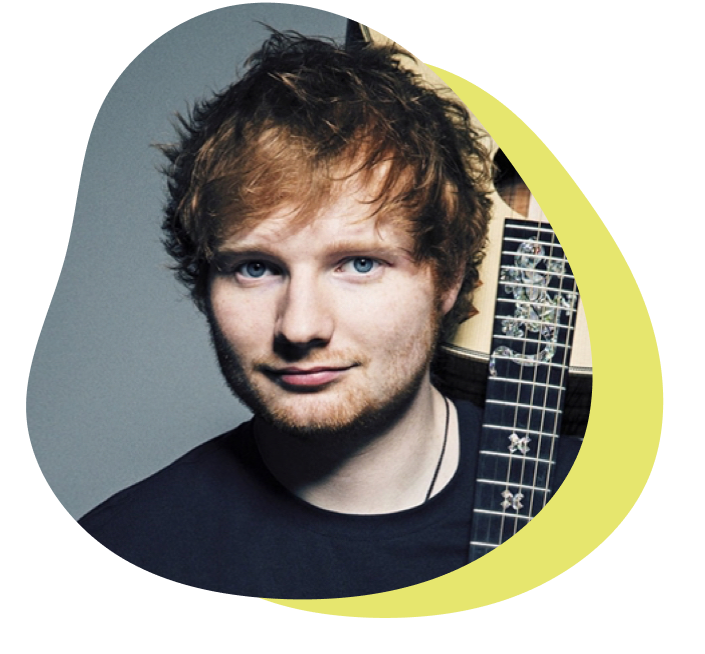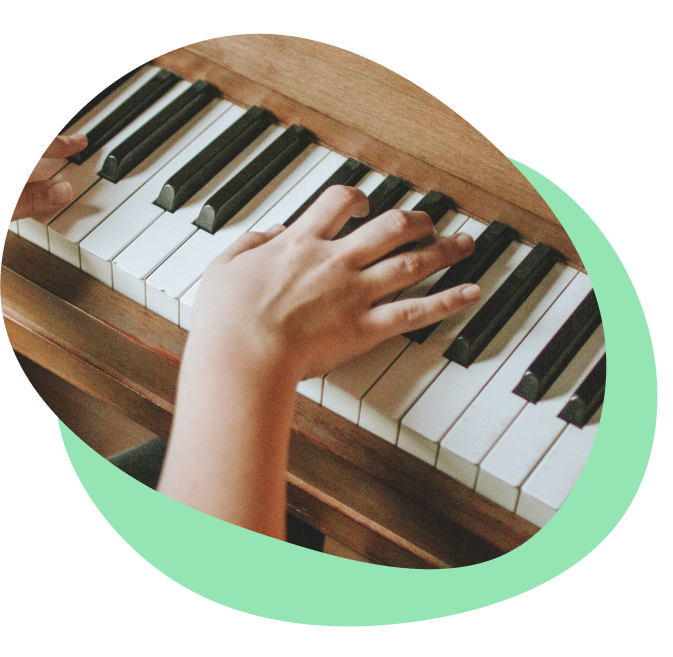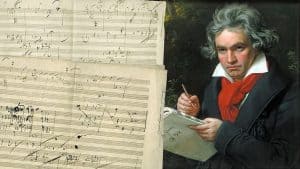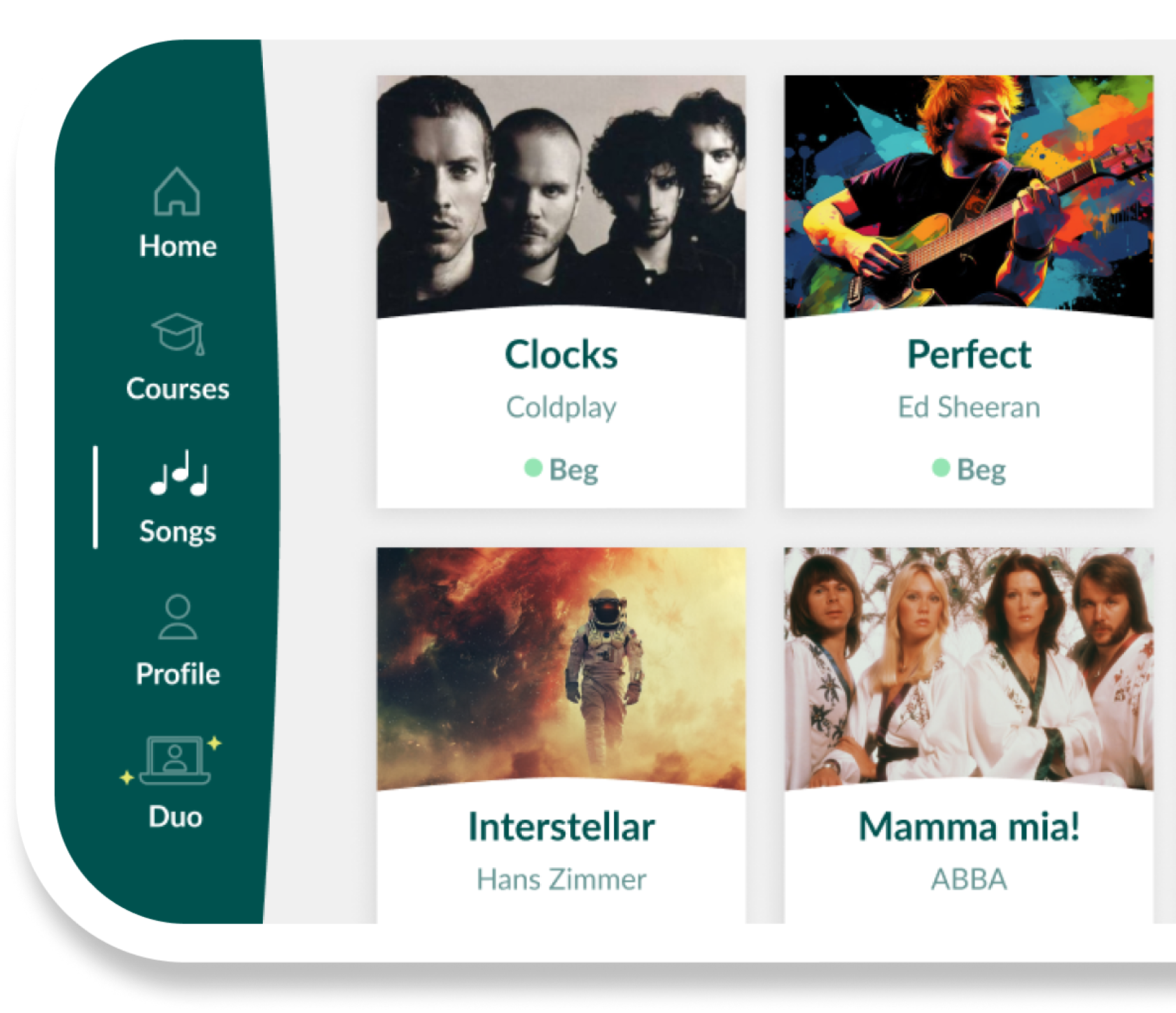From iconic ballets to expressive piano pieces, Tchaikovsky’s timeless works offer something for every pianist from beginners to professionals. Whether you’re looking to build on your skills or add to your repertoire, this guide help you learn and play his music. Let’s start by learning a little more about Tchaikovsky and why his works are still, so beloved by musicians and listeners alike.
- Fall in love with the music - Learn your favorite songs, at a level suitable for you.
- Enjoy interactive piano lessons - Explore courses covering music theory, technique chords & more.
- Get real-time feedback - Skoove's feedback tells you what went well and what needs practice.
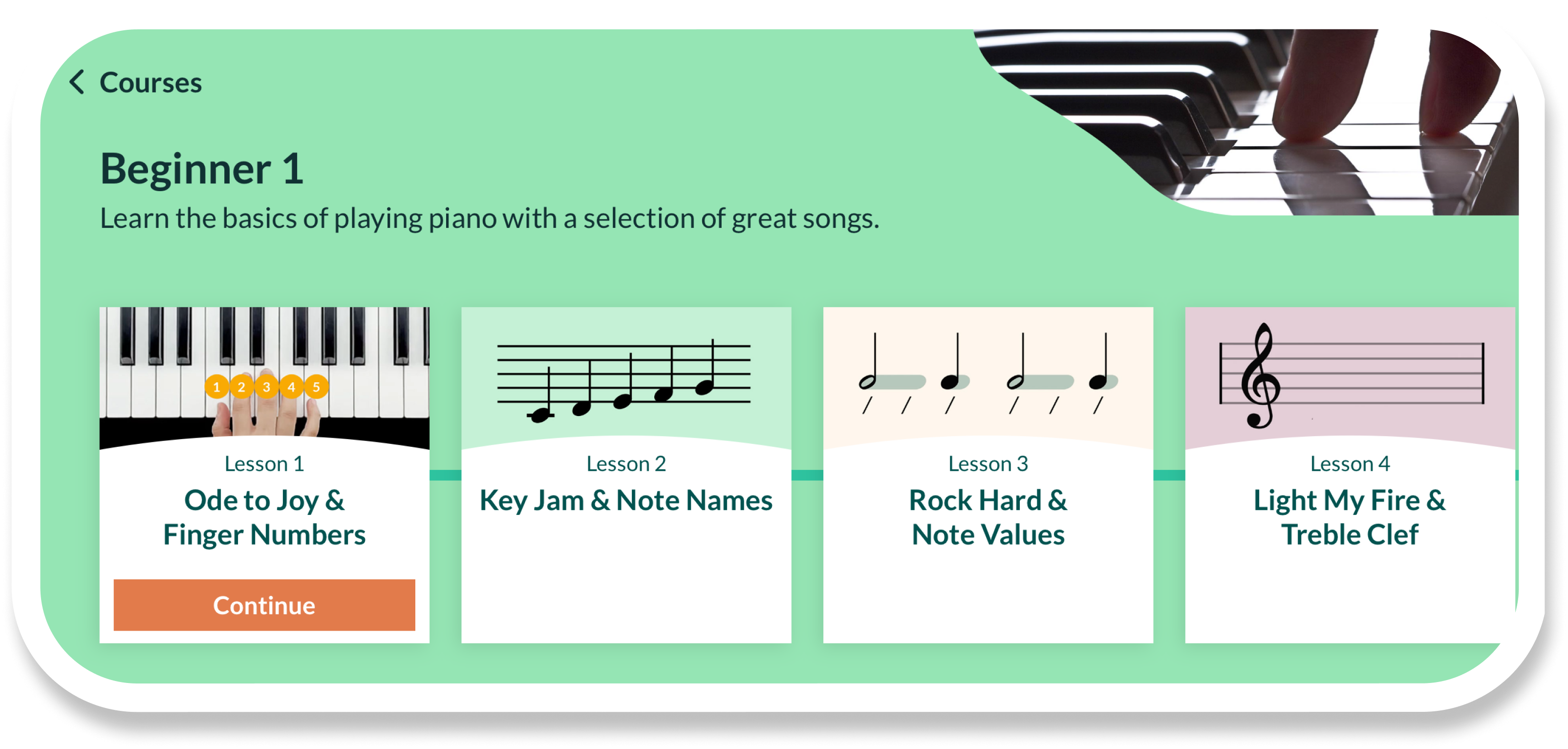
Who was Tchaikovsky?
Pyotr Ilyich Tchaikovsky, born in 1840 in Russia, was one of the most influential composers of the Romantic era. His music is known for its emotional depth and dramatic power. Tchaikovsky’s most famous works have left a lasting legacy that continues to inspire musicians and listeners worldwide. Tchaikovsky’s compositions, from the enchanting “Nutcracker” to the tragic “Swan Lake”, have become integral to classical music, shaping the course of ballet and symphonic music. His ability to express human emotion so vividly through music makes his works not only timeless but also deeply relatable, no matter your level of musical experience. Today, Tchaikovsky’s legacy endures in concert halls, piano studios and beyond.
He composed across nearly every genre; ballets, operas, symphonies, concertos, piano pieces and choral works. Today, he’s remembered not just for technical skill, but for how his music makes people feel. Let’s take a look at our list of Tchaikovsky’s compositions.
1. “1812 Overture” Theme (1880)
One of Tchaikovsky’s popular works, the “1812 Overture” celebrates Russia’s victory over Napoleon during the French invasion.
The “1812 Overture” is known for its thrilling grandeur, including the dramatic use of cannon fire and bells. However, it’s the powerful opening theme that makes it a timeless favorite. It’s a song that captures both triumph and struggle, providing an excellent opportunity for piano students to practice having fun with dramatic dynamics.
2. “Dance of the Sugar Plum Fairy” – The Nutcracker (1892)
This piece is part of one of Tchaikovsky’s ballets “The Nutcracker” and has become a holiday staple. This ballet tells the story of Clara, a young girl who is transported to an enchanting world. The “Dance of the Sugar Plum Fairy” is a musical representation of this world conveying whilst and delight. It is a playful, delicate piece that uses a celesta in the original orchestration, providing a festive tinkling.
“The Nutcracker” ballet is full of playful charm. This piece in particular is known for its light, fairy-like quality. For pianists, it offers a unique chance to practice clear articulation and control over delicate, staccato notes.
3. “Swan Lake” (1877)
One of Tchaikovsky’s major works and emotionally profound ballets, “Swan Lake” tells a tragic love story. The ballet follows the tragic tale of a princess, Odette, cursed to live as a swan until she finds true love. Tragically the story ends in sorrow as the lovers are separated.
The “Swan Lake” ballet is famous for its emotional depth, and the “Swan Theme” encapsulates this sentiment with its flowing, melancholy melody. The “Swan Lake” piano is ideal for practicing legato playing and emotional interpretation, allowing pianists to work on connecting notes and phrases with feeling.
4. “June: Barcarolle” – The Seasons, Op. 37a (1876)
Part of a cycle of twelve of Tchaikovsky’s piano pieces, “The Seasons” is a wonderful representation of Tchaikovsky’s ability to convey the atmosphere of each month. “Barcarolle” (June) has a flowing, gentle melody, inspired by the sounds of rowing boats on a river.
This piece is perfect for beginners to practice creating a smooth, lyrical sound. The flowing, repetitive rhythm mirrors the motion of a boat, making it ideal for working on consistency in phrasing and expressive dynamics.
5. “March” (1892) – The Nutcracker
The “March from The Nutcracker” is one of Tchaikovsky’s most famous pieces. Cheerful and energetic, it’s a perfect example of his ability to combine playful rhythms with a sense of grandeur, making it a fun piece for pianists.
This ballet follows the story of Clara, a young girl who is transported into a magical world on Christmas Eve. The march depicts the moment all of Clara’s toys come to life, setting the scene for the captivating and magical events to come. It is often heard in holiday performances, bringing energy and joy to audiences.
For pianists, it’s a great piece for practicing rhythm, articulation and control. The strong rhythm makes it easy to follow along, however the tempo can offer a fun challenge when played at full speed.
6. “Waltz of the Flowers” – The Nutcracker (1892)
Another memorable piece from “The Nutcracker” the “Waltz of the Flowers” is graceful yet full of energy. Itis performed as part of the ballet’s grand finale and features sweeping, delicate melodies as Clara and the Nutcracker Prince travel through a magical garden of dancing flowers.
This waltz is full of lush harmonies and flowing rhythms, which make it an excellent choice for intermediate pianists looking to improve their control over waltz time. The piece demands a balance between precision and expressiveness.
7. “The Sick Doll” – Children’s Album, Op. 39 (1878)
A delicate and emotional piece, “The Sick Doll” from “Children’s Album” conveys the sadness of a child’s doll who is “sick”. It’s simple yet expressive, ideal for beginners looking to add emotional depth to their playing.
This miniature piece is full of tender emotion allowing beginners to practice developing an expressive touch and playing with sensitivity. The repetitive, simple nature makes it ideal for building foundational piano skills while conveying sadness and vulnerability.
8. “Garland Waltz” – Sleeping Beauty (1890)
The “Garland Waltz” from “Sleeping Beauty” is an elegant and grand waltz. This Tchaikovsky song is one of his most beautiful examples of orchestral writing with the piano arrangement conveying both intricacy and charm. This is a fantastical tale of a princess called Aurora who is cursed by an evil fairy to fall into a never ending sleep. The “Garland Waltz” celebrates the arrival of the prince with a suitably grand waltz.
It is an excellent piece for intermediate pianists to practice both their rhythm and control of dynamics. The grand, sweeping melody contrasts with the intricate accompaniment, offering a wonderful opportunity for pianists to explore contrasting textures.
These masterpieces are just the beginning! If you’re ready to dive deeper into Tchaikovsky’s pieces of classical music and elevate your piano skills, Skoove is here to guide you every step of the way with a progressive approach to piano tuition. Skoove offers a vast catalog of not only pieces like the classical compositions we explored in this article but pop, jazz and film scores too. Take a look and discover your full piano playing potential today. Happy practicing!
Author of this blog post:
Susana Pérez Posada

With over seven years of piano education and a deep passion for music therapy, Susana brings a unique blend of expertise to Skoove. A graduate in Music Therapy from SRH Hochschule Heidelberg and an experienced classical pianist from Universidad EAFIT, she infuses her teaching with a holistic approach that transcends traditional piano lessons. Susana’s writings for Skoove combine her rich musical knowledge with engaging storytelling, enriching the learning experience for pianists of all levels. Away from the piano, she loves exploring new places and immersing herself in a good book, believing these diverse experiences enhance her creative teaching style.
Published by Lydia Ogn from the Skoove team



